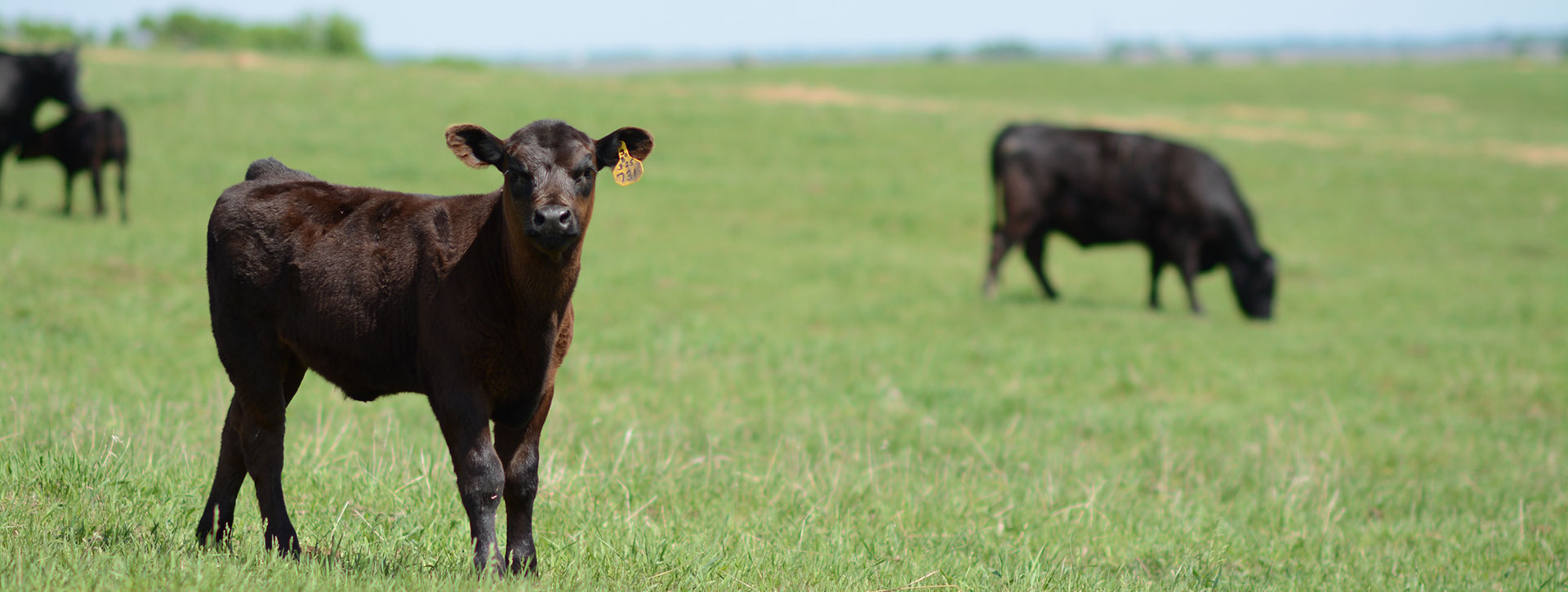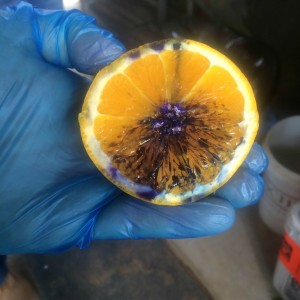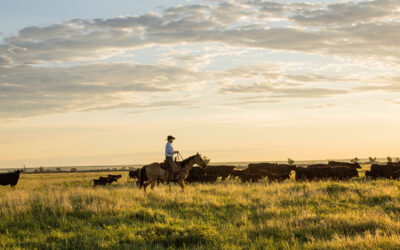
Don’t Get Bit

Have you ever been bitten by an elephant? How about a mosquito? Likely you can answer “yes” to the latter. It always seems to be the little things that get us and it’s the same when producing quality beef. The smallest things can make a big difference.
Routine vaccines and treatments are one of those little tasks that can have a big impact on meat quality. During the recent MBA tour, Dr. Phil Bass, CAB meat scientist, showed participants how proper injection sites can mean the difference between a CAB steak and garbage.
Using oranges instead of cattle, participants gave both a subcutaneous (under the skin) and intramuscular shot of purple dye to the orange. Slicing the oranges open revealed how an injection affects the “meat” of the orange.

When an injection is given intramuscularly, scar tissue can build up where the needle entered the muscle. You’ve heard it before: to make the brand, beef must first meet 10 carcass-based specifications. Scar tissue kicks it out of eligibility. Worse yet, most often meat with lesions will be cut out as no value.
“When the injection is given subcutaneously, you won’t have any scar tissue developed,” Phil says.
Never give shots in an area that is going to be used for steaks or roasts, anything over the back or the rump region because of the risk, he says.
“A steak with an injection site lesion will never be sold in a grocery store because it just doesn’t look good,” Phil says. “Most folks if they see it, they will throw it away. It could be used for ground beef but it most likely it will be tossed in the trash.”
Some simple recommendations: follow the labeling on the package to make sure that the withdrawal periods are upheld. Give injections in the neck area, especially if it has to be given intramuscularly (that cut will already be going into ground beef).
Just a few decades ago this used to be a major problem, but with the help of education and focus, the problem of injection site lesions has gone from 21.6% of top butts from fed cattle affected in the first National Beef Quality Audit in 1991 to just 3.2% six years later and virtually ZERO today. That’s quite a success story, but there are still occasional problems and we’d all like to see this one reach “Absolute Zero,” right?
Get yourself and the crew trained in all the proper procedures and everything else to safeguard quality, through the industry’s Beef Quality Assurance program.
Because, when your hard work is thrown away? Well, that just bites.
–Nicole
You may also like
Raised with Respect™ Cattle Care Campaign Launched This Fall
Raised with Respect™ was developed as part of a strategic cattle care partnership between Sysco and CAB. The collaboration focuses on supporting farmers and ranchers, equipping them with continuing education to stay current on best management practices and helping to increase consumer confidence in beef production.
Everything They Have
Progress is a necessity on the Guide Rock, Nebraska, ranch where Troy Anderson manages a commercial Angus herd, small grower yard, his 10-year-old son, and a testing environment. Troy’s approach includes respect for his livestock, people and land. For that, Anderson Cattle was honored with the CAB 2023 Commercial Commitment to Excellence Award.
Making It Better
Most sane folks don’t choose to go into business with Mother Nature. She’s a fickle and unpredictable partner. So, how did two people with zero agricultural background, no generational land, wealth or genetics carve a profitable partnership with her in Southwest Kansas? By focusing on progress and a desire to leave things better than they found them – which also earned them the CAB Sustainability Award.



